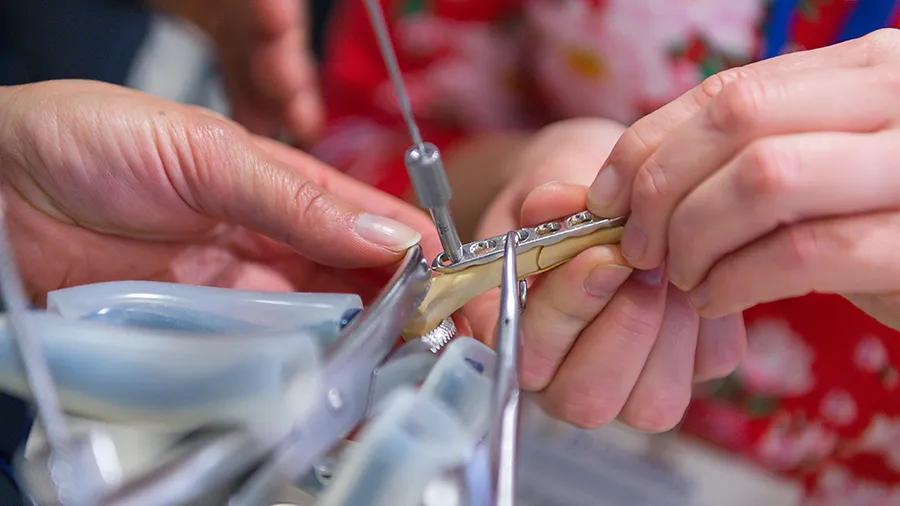Arthrodesis with Kerf-cut cylinder
1. Principles/General considerations
Cervical stenotic myelopathy (CSM) is a developmental disorder that is a common cause of spinal ataxia in young horses. Cervical vertebral deformation leads to stenosis of the vertebral canal and spinal cord compression.
CSM is commonly appreciated in foals and young horses between 6 months and 3 years of age and is more prevalent in male and Thoroughbred horses.
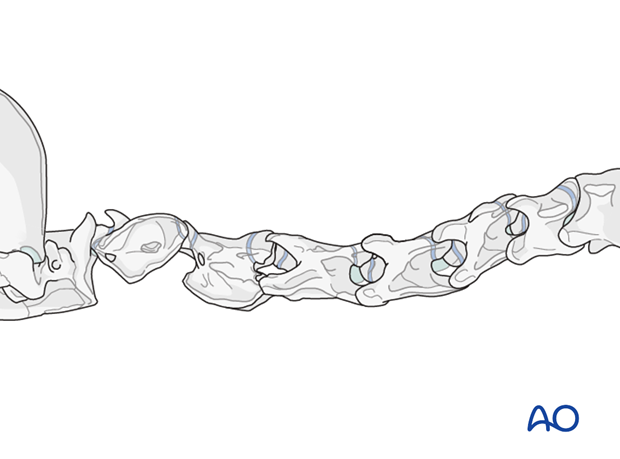
Depending on the localization of the instability, two or three vertebrae are fused. This decision is made based on the myelography images.
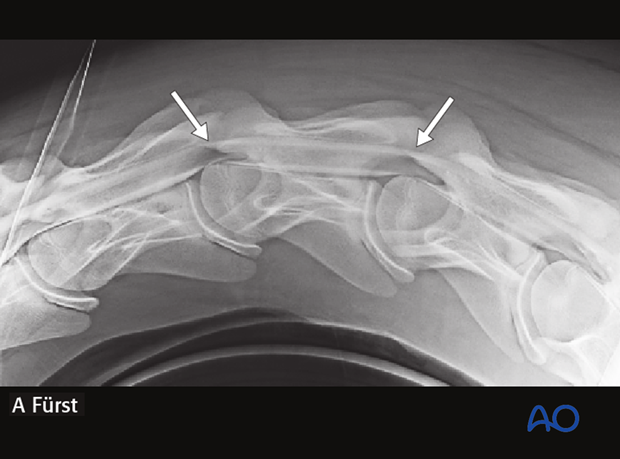
Surgical insertion of stainless-steel cylinders, to facilitate bony fusion and stability between cervical vertebrae, is a popular treatment choice.
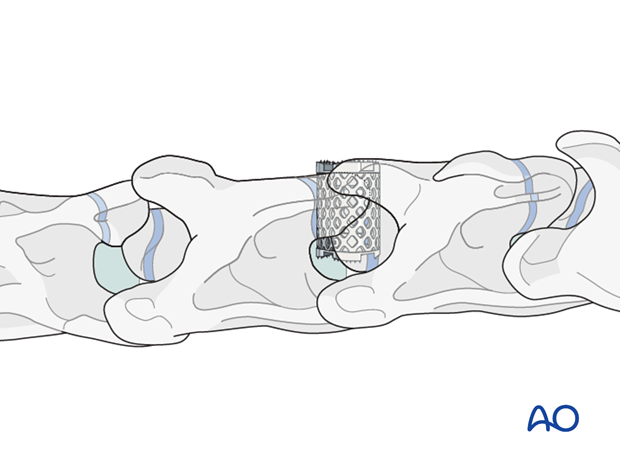
2. Preparation and approach
This procedure is performed with the patient positioned in dorsal recumbency through the ventral midline approach to the cervical spine.
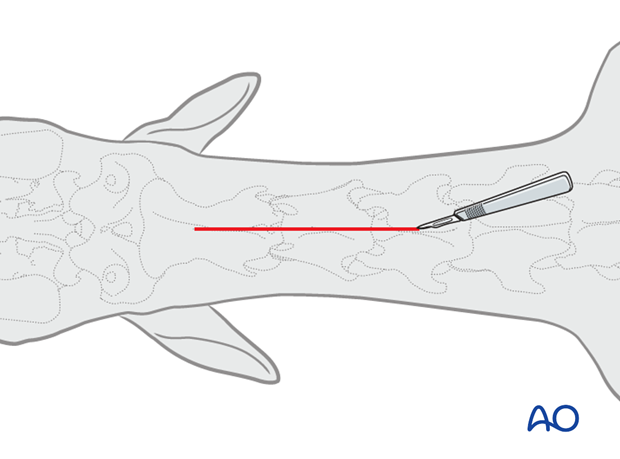
3. Realignment
Preparation of the bone
The ventral spinous process of the body of the affected vertebrae is flattened slightly using a curved osteotome and bone rongeur.
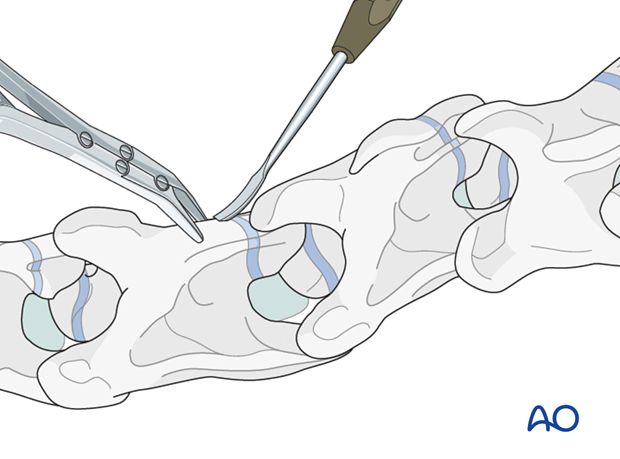
After exposing the ventral surfaces of the affected vertebrae, the alignment is corrected and maintained with bone-holding forceps.
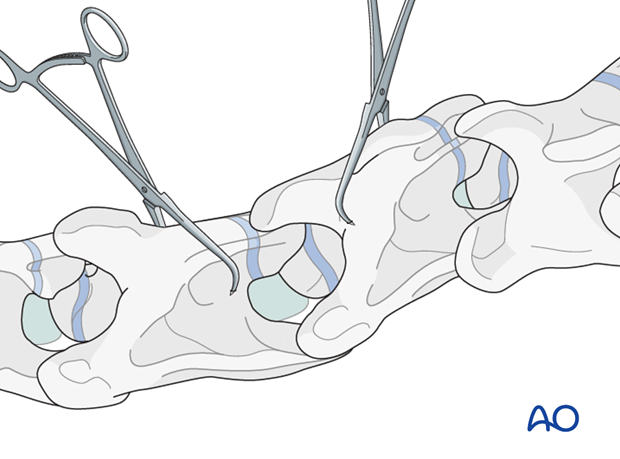
4. Fixation
Implant selection
The most frequently used implant is a partially or fully threaded cylinder (Kerf-Cut Cylinder), which is a modification of the Bagby Basket.
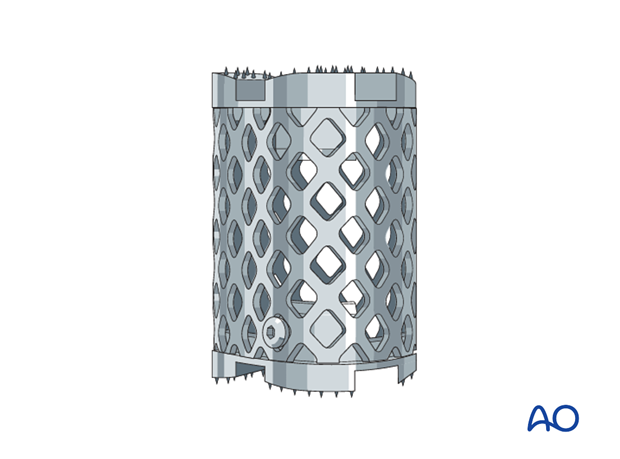
Implant application
A 25 mm diameter drill guide is placed on the ventral surface of the intervertebral joint space using radiographic control. The aim is to equally bestride the articulation at the depth of 25 mm.
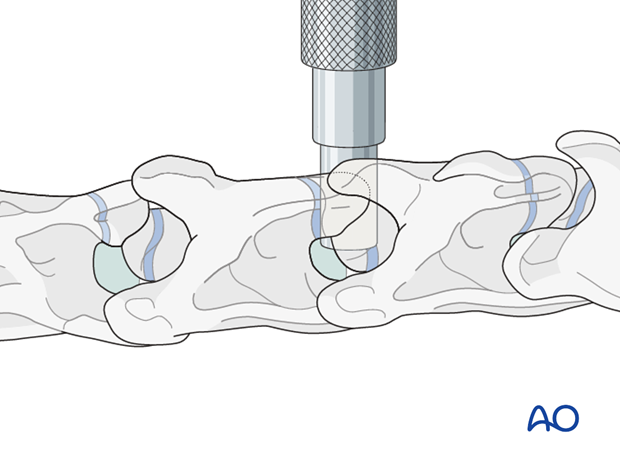
The drilling depth should be 25 to 30 mm. A shelf of 10 mm of bone should be left between the drill and the bottom of the spinal canal.
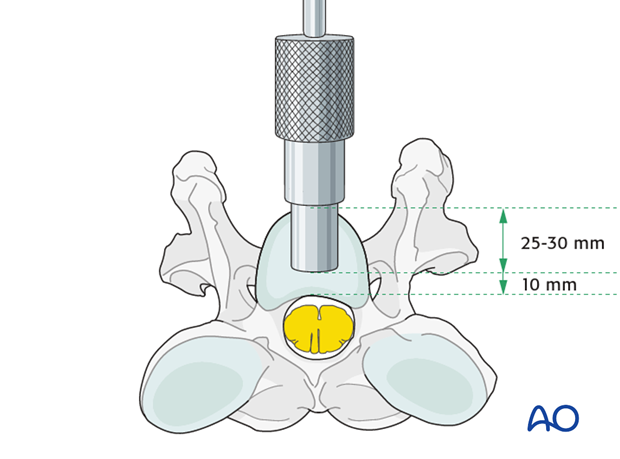
Once the correct depth has been reached, the drill guide is removed and the implant site is widened by a number 1 Kerf-Cutter and later with a number 2.
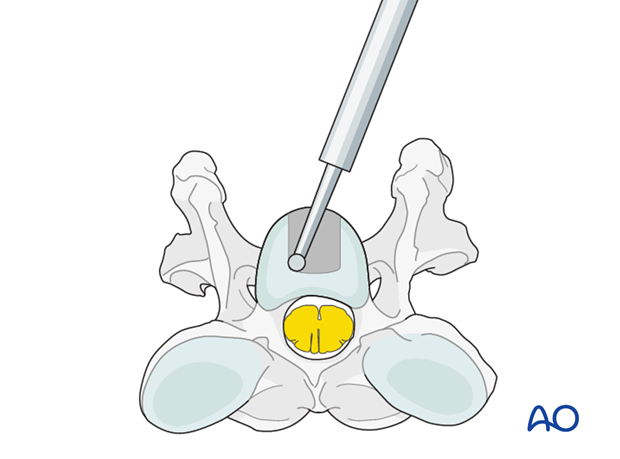
The implant is inserted until firm resistance is encountered.
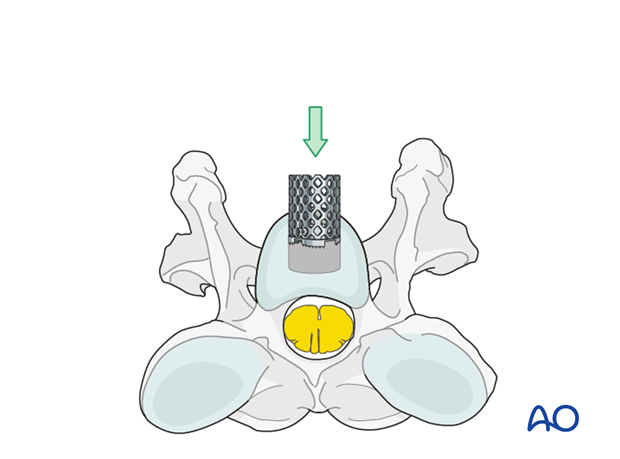
Bone graft application
Bone graft is collected from the bony cylinder removed during drilling from the ventral spine. The bone graft is impacted firmly inside the hollow implant.
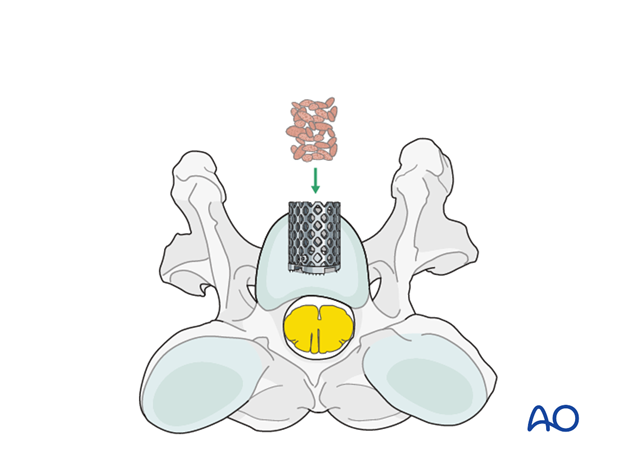
Postoperative radiograph showing a Kerf-cut cylinder in the correct position.
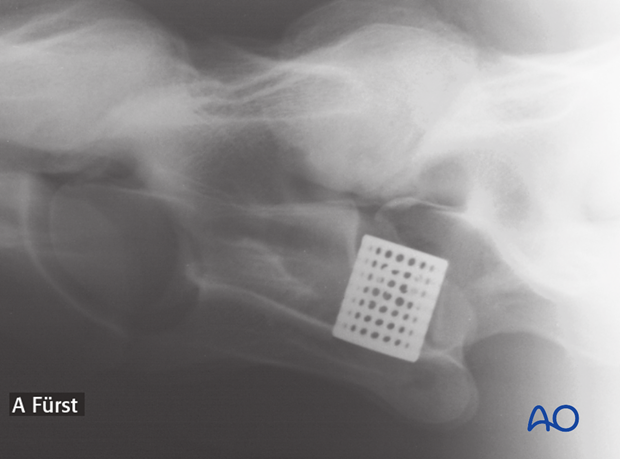
5. Closure
The muscles, subcutaneous tissue and the skin were closed in a continuous fashion. A close active drain can be placed at the level of the plate, exiting the skin near the incision and sutured to the skin.
A stent bandage is applied, and covered with an adhesive barrier drape to keep the incision clean and dry during recovery.
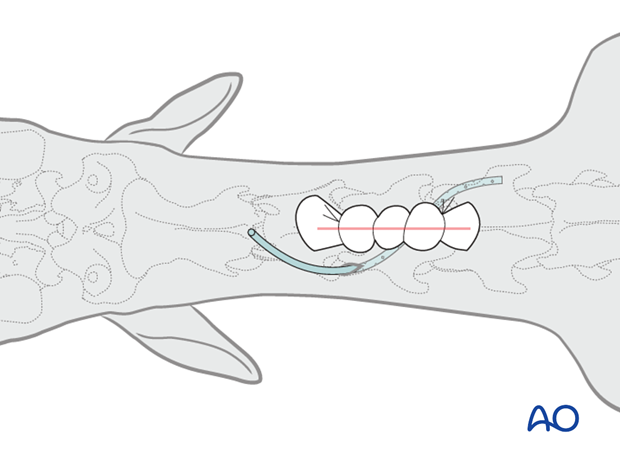
6. Aftercare
Following surgery, antibiotics and NSAIDs are routinely administered for 3 days. If indicated, they need to be continued.
Routinely follow up radiographs are taken immediately after surgery and after 2 and 4 months.
The rehabilitation protocol includes 2 months of stall confinement, followed by 1 month of hand-walking, and 2 months of progressive exercise.
Only when the ataxia has completely disappeared, the horse can return to training or other activities.
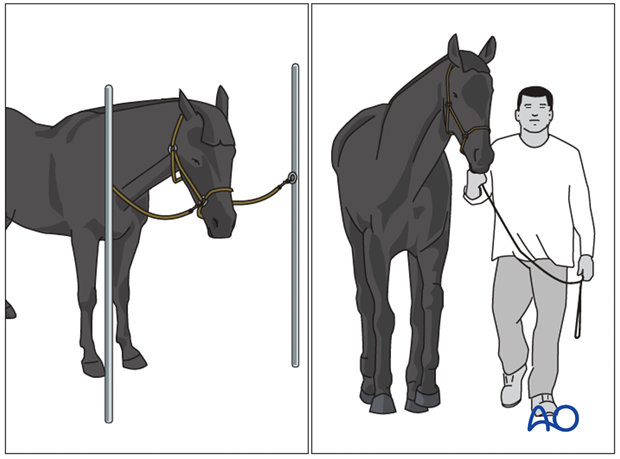
Implant removal
There is no need for implant removal, except in cases of implant loosening or surgical site infection.
